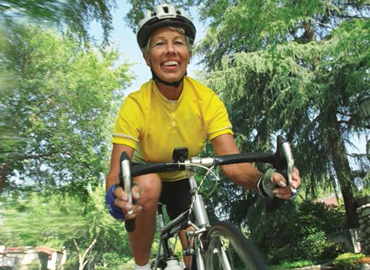
By Terri Poindexter Smith
Running (or Walking), Swimming and Cycling
Aerobic exercises like running, jogging, brisk walking, swimming or cycling—all great for the body and the heart—are also great for the brain. And, there’s no better time than the present to get outside and give your brain a boost with these types of exercises.
While they’re growing muscles in your body, they are also increasing your heart rate, pumping more oxygen to your brain and causing your body to release a number of healthy hormones. All of this provides a lot of nourishment for your brain cells.
According to the National Institute on Aging, some studies even suggest that aerobic exercises may reduce dementia risk by improving connectivity between cells in the brain, a process called brain plasticity.
Starting an outdoor fitness routine may be one of the best things you can do for your brain. If you think you’re either too old or out-of-shape, consider this: Sister Madonna Buder (born July 24, 1930), a nun from Spokane, WA, is the current world record holder for the oldest person to ever finish an Ironman Triathlon (swimming, biking and running).
Buder began exercising for the first time at age 48. Forty years later, she’s completed 325 triathlons.
Marathons may not be in your immediate future, but if your healthcare provider agrees, consider getting outside, breathing in the fresh air and getting your heart pumping doing some of the things you enjoyed as a kid. Always check with your doctor before beginning a rigorous exercise plan.
The following aerobic activities can go a long way in keeping both your body and mind fit. Here are a few tips for getting started:
1. Walking: Start out warming up with a five minute, slower-paced walk. Add five minutes each day. As your walks grow longer, speed up in the middle stages and slow down during the last five minutes. Build your walks up to at least 25 minutes per day.
2. Running: After you’ve been walking comfortably for several months, you can slowly add in a few minutes of jogging or running each session. Track your progress and remember that it’s ok to slow down and walk whenever you feel the need.
3. Swimming: The key to exercising in water is taking it slow and including lots of breaks at first. Remember that it requires your heart, lungs, and muscles to work differently. Work up to swimming several lengths of the pool at an easy pace.
4. Cycling: Think about your goals—where you want to ride, how far and on what terrain. A good bike shop can help you choose the right bicycle to fit your needs. Look for reviews online to find the shop that provides the best customer service to get you up and rolling.










